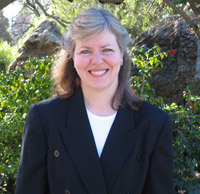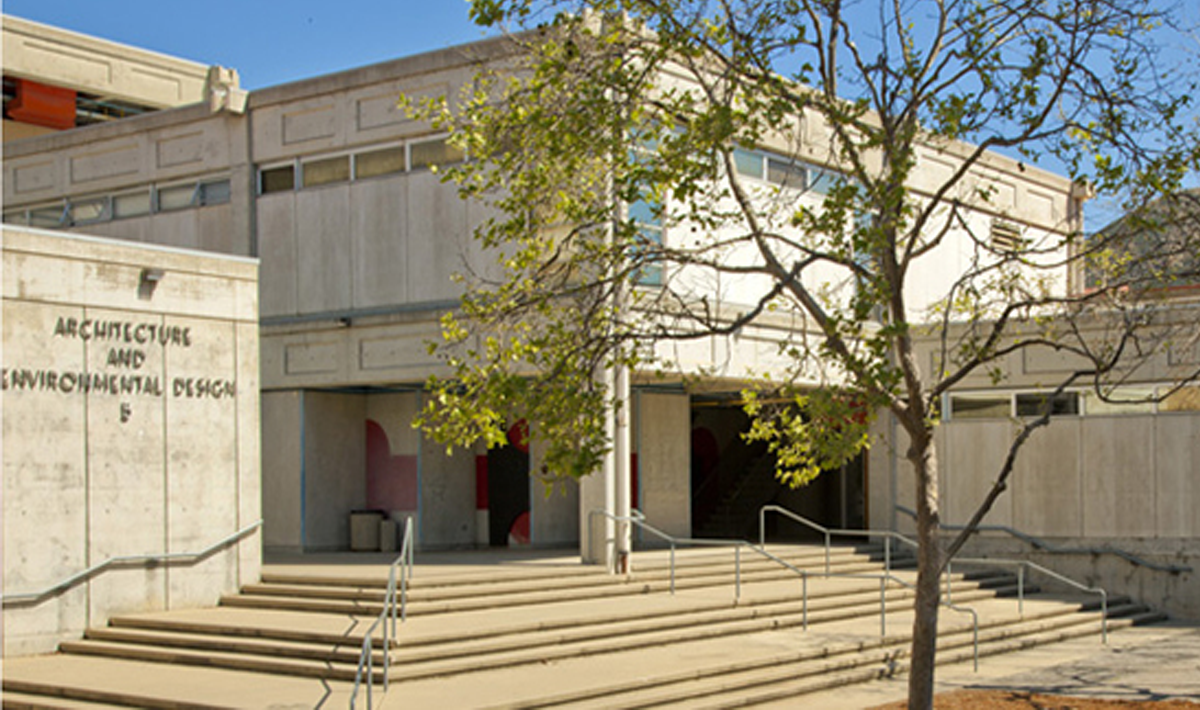ARCHITECTURAL HERITAGE: WOMEN’S HISTORY MONTH
Written by Renu Varadheeswaran, CalPoly – SLO on the 2019-2020 AIAS Equity & Diversity Task Force
As we focus on Women in Architecture for this Heritage Month, it’s important to note that there are many powerful, intelligent women in leadership, both in academia and professional practice. Despite the many barriers presented to women in the profession, there are many strong women that have overcome these challenges. One such woman that has been successful, working up to a leadership role at one of the most highly regarded architecture programs in the country is Margot McDonald.
Margot McDonald is the Architecture Department Head and a Professor at the California Polytechnic State University – San Luis Obispo. Her journey into Architecture and transitioning into Academia has been unique, giving her a broad range of skills and experiences in the process.
 Educational Credentials:
Educational Credentials:
Ph.D. candidate (A.B.D.), Geography, University of California, Santa Barbara
M. ARCH. University of Oregon, Eugene, OR
B.S. Math. University of California, Santa Barbara
B.A. French, University of California, Santa Barbara
Teaching Experience:
Professor, Architecture Department, Cal Poly, San Luis Obispo
Professional Experience:
Architect, Thallon & Edrington Architects, Eugene, Oregon
Intern Architect, Robertson Sherwood Architects LLC, Eugene, Oregon
GIS Programmer, Henningson, Durham and Richardson (HDR), Santa Barbara, CA
1. WHAT HAS BEEN YOUR PROFESSIONAL JOURNEY TO GET TO THE WHERE YOU ARE NOW?
I came from a technical background before architecture school. I was a GIS programmer working on digital maps and environmental impact reports for HDR, an international AEC firm when I graduated with my BS and BA from UCSB. I also worked in digital voice recognition for a speech technology think tank lab in Santa Barbara that was a subsidiary of Matsushita Corporation headquartered in Japan. As a software engineer, I found these applications fascinating but also longed for a more creative and interactive work environment. I migrated into architecture, first, by volunteering for the City of Santa Barbara’s Community Development Department on a historic preservation survey. Since I had undergraduate degrees in Math and French, I researched graduate schools where I could earn a first professional degree in architecture and was accepted at the University of Oregon. It was a perfect fit.
I worked in the Energy Studies in Buildings Lab with GZ Brown as a grad student and intern architect while in Eugene, Oregon. It was this position that connected me to Cal Poly when I was on a research grant that included a software design team from Lawrence Berkeley Labs, Battelle National Labs, University of Oregon and Cal Poly. This is where I met Cal Poly Professor Emeritus Jens Pohl. Over lunch I mentioned my desire to try out teaching in the future. I was recruited on the spot to apply for a tenure track position in computer applications at Cal Poly that closed the next day. I made the deadline. The rest is history.
2. WHAT MADE YOU WANT TO GO INTO ACADEMIA?
Several things. One was on the advice of a structural engineering professor at the University of Oregon named Steve Tang. Steve had his own structural design process called “Tanguage: The language of learning.” He recognized in me the potential for teaching and encouraged me to follow this path. I was also a graduate teaching fellow at the University of Oregon in the environmental control systems courses. Two faculty, GZ Brown and John Reynolds, laid the groundwork for a large number of faculty who teach building science across schools of architecture in the US and abroad. We call ourselves the “Oregon mafia” because there are so many teachers who had followed this path to become inspired teachers of building technology. I was also encouraged to get involved with professional societies like the Society of Building Science Educators, the American Solar Energy Society, the USGBC, the Association of Collegiate Schools of Architecture, and the AIA. I realized then that while I was excited about design practice, I was also really interested in research and teaching related to the built environment.
3. Did the field itself meet the expectation you had for it when you chose this career?
Yes. I have been very satisfied with the field of architecture as a career path. I had a fantastic practice experience working for two firms in Eugene, Oregon. Thallon and Edrington was a high-impact, small practice. The practice had the making culture that was celebrated in-house. We were located in an historic mail shed next to the Amtrak Station in Eugene that had a wood-working shop at one end of our office and a landscape architect at the other end. We worked with metal fabricators and manufactured parts of the buildings we designed. The work was often published in Fine Homebuilding magazine and in Rob Thallon’s publication, “Graphic Guide to Wood Frame Construction.” Unlike how we teach students at Cal Poly, I had no prior shop experience in school and learned it all through the practice. We used the book “The Pattern Language” by Christopher Alexander as a way of working with and empowering clients. This was a very rewarding experience that exceeded my expectations about what I imagined practice could be. It was a tough choice to leave professional practice for teaching but I am glad I did.
4. What is the most difficult challenge you’ve faced being a woman in a leadership position?
I once had to have a difficult conversation with an executive outside academia where I needed to assert my leadership position. I had to make sure that the message I needed to deliver was absolutely clear. I changed my usual diplomatic communication style, and explicitly asked if my message was understood. The delivery worked.
5. Have you ever found yourself in a situation where you had to establish your credibility for someone? What was the outcome?
Establishing credibility is a challenge in spite of one’s background and qualifications. It requires patience and constant vigilance. Architects are admired but not always respected. Being a female architect makes the challenge even greater. Honestly, I can’t think of a single most difficult challenge pertaining to leadership.
6. What are some positive influences on your professional career from being a woman?
Empathy is a strong personal trait that I possess, and it is often associated with women. It is extremely beneficial in working in collaborative environments and in cross-disciplinary settings.
7. Who’s been your role model and mentor through this journey?
I was very fortunate to have a mentor while in graduate school who helped me establish my career path in academia. His name was GZ “Charlie” Brown. He and his colleague, John Reynolds, were architecture professors at the University of Oregon. I was a graduate teaching fellow in their legendary team-taught environmental controls system course at the U of O and later worked for Charlie in his lab, Energy Studies in Buildings, both as a graduate student and while working as an intern architect in Eugene, OR. John Reynolds inspired me through his advanced building performance seminars on passive solar buildings and encouraged me to get involved with the American Solar Energy Society where I published my first academic papers and presented at conferences. John also encouraged me to join the ASES Board of Directors and national committees.
8. What would be one piece of advice you’d give to young females entering the profession?
I would recommend finding mentors who have confidence in you and see your true potential. I feel fortunate to have found people throughout my career who have been mentors and may not even know how much they contributed to my development. I also recommend taking measured risks. I took time off between my two software engineering jobs to ride my bike through Europe for 2-½ months to plan my next career move. I knew it would be something radically different from programming. I had the security of good paying jobs in the software industry so I did not worry about finding a career path that I could be passionate about. This led me to architecture. If I had not taken the risk of a career change, I would still be coding today. Perhaps I would be wealthier but definitely not happier!










